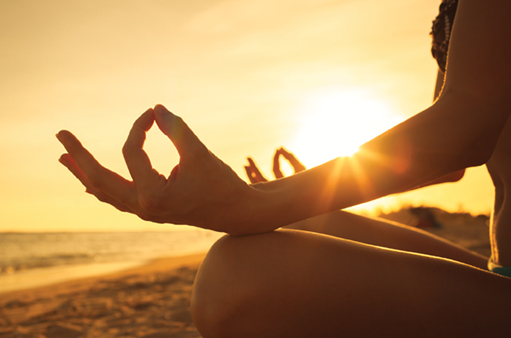The practice of meditation has many forms. There is guided meditation, contemplative meditation, transcendental meditation, Buddhist meditation and many others.
Daniel Graxton, resident teacher at Lineage Buddhist Meditation Center in downtown Orlando, practices and teaches Buddhist meditation in both English and Spanish. His classes are open to all. Students from all religions, political affiliations, races and socio-economic status are welcome to learn meditation at the center.
He recommends that beginner students focus their attention on their breathing and sit quietly for about five minutes. Repeatedly practicing how to focus the mind over longer periods of time can lead to meditation becoming a support system.
Meditation student Jesse Henson of Winter Park has been meditating for 40 years. Introduced to it by his spiritual teacher, Henson says he has experienced great peace and inner harmony through meditation, even crediting it for helping him get over his fear of public speaking.
Henson also teaches meditation in correctional facilities. He says the meditation students he has worked with have told him that they feel deep peacefulness in the midst of the outer chaos of being in prison.
Joe Noecker, a licensed mental health counselor, life coach and psychotherapist at the Center for Self Balance in Orlando, says both the types and effects of meditation vary. He has seen patients gain confidence, lessen anxiety, overcome sleep disturbances and feel relief from chronic physical pain. He warns that while meditation can be helpful, it should not be the only treatment for more significant psychological issues.
Noecker suggests that newcomers research and participate in several styles of meditation to find the one that benefits them the most. To gain benefits, though, he says meditation should be experienced rather than just learned.
Five easy ways to meditate:
1. Find a space where you will not be disturbed for a length of time. Set a timer if you wish.
2. Make yourself comfortable either on the floor, cross-legged with a wall or other back support, or in a chair. If you are in a chair, then make sure your feet are hip-width apart, uncrossed, and your back is straight.
3. Use a visual cue, music or incense if you wish. If you prefer music, it is suggested that it be instrumental. A visual cue can include a picture of nature, a spiritual or religious item such as a cross, or a picture of a spiritual teacher. Yes, you can meditate with your eyes open, but keep a soft gaze and don’t fixate or stare.
4. Keep your hands folded, one on top of the other in your lap, or facing palm up or down on your thighs.
5. Start by taking a few deep breaths in and out. With each breath in, visualize or say to yourself “in,” and as you breathe out, say or visualize the word “out.” Use your ideal (love), visual (a picture), or sound (music) to focus your mind.
Tip: If you become agitated, interrupted by outside forces, bored or fall asleep during your meditation, then stop and start again. Gently bring yourself back to focusing on your breathing. While meditating you should let go of judging whether you or your meditation is good, worthy or effective. Remember, meditation is a practice for relaxation and peace. Harshly judging yourself will not help you to achieve either of these goals.






Comments